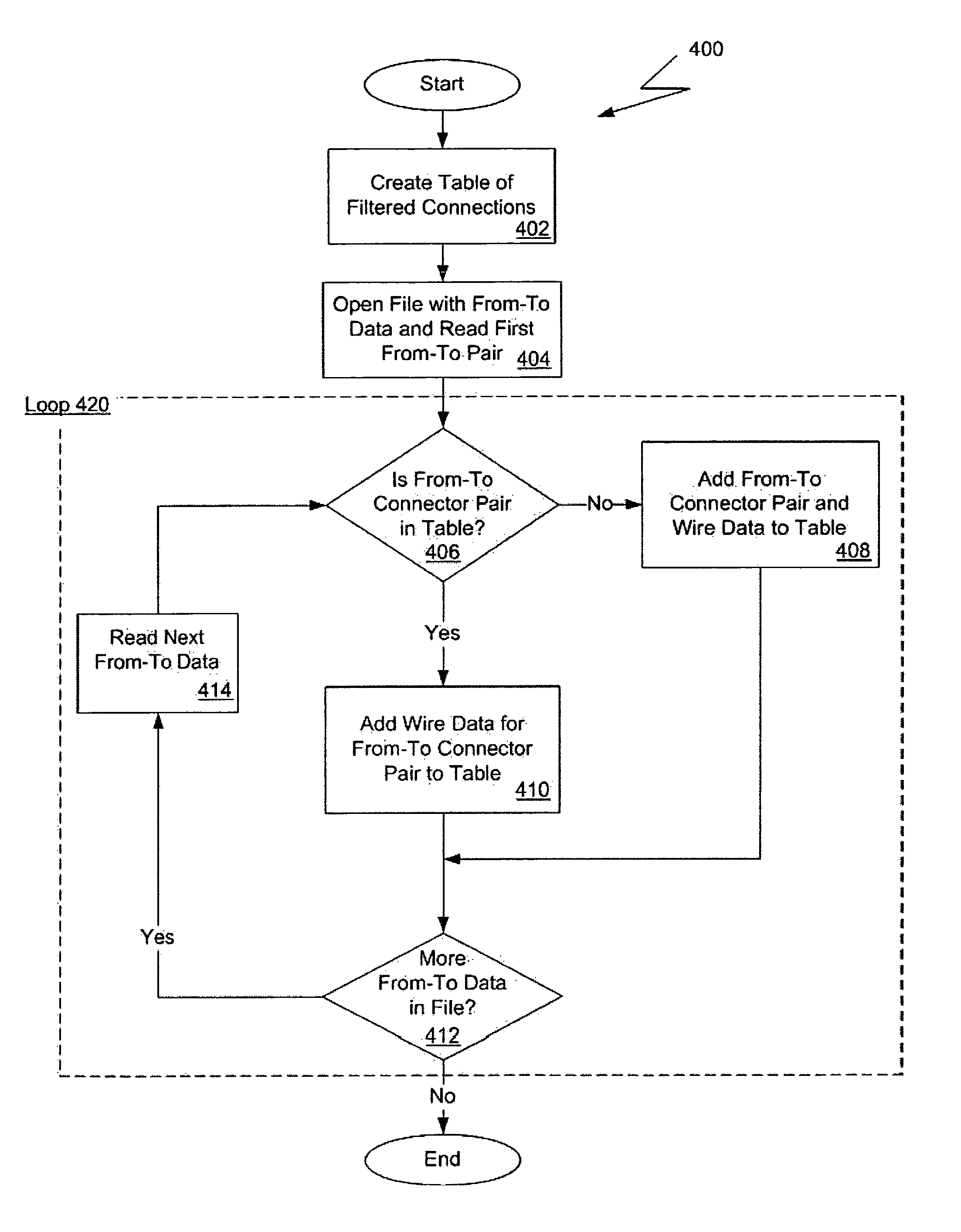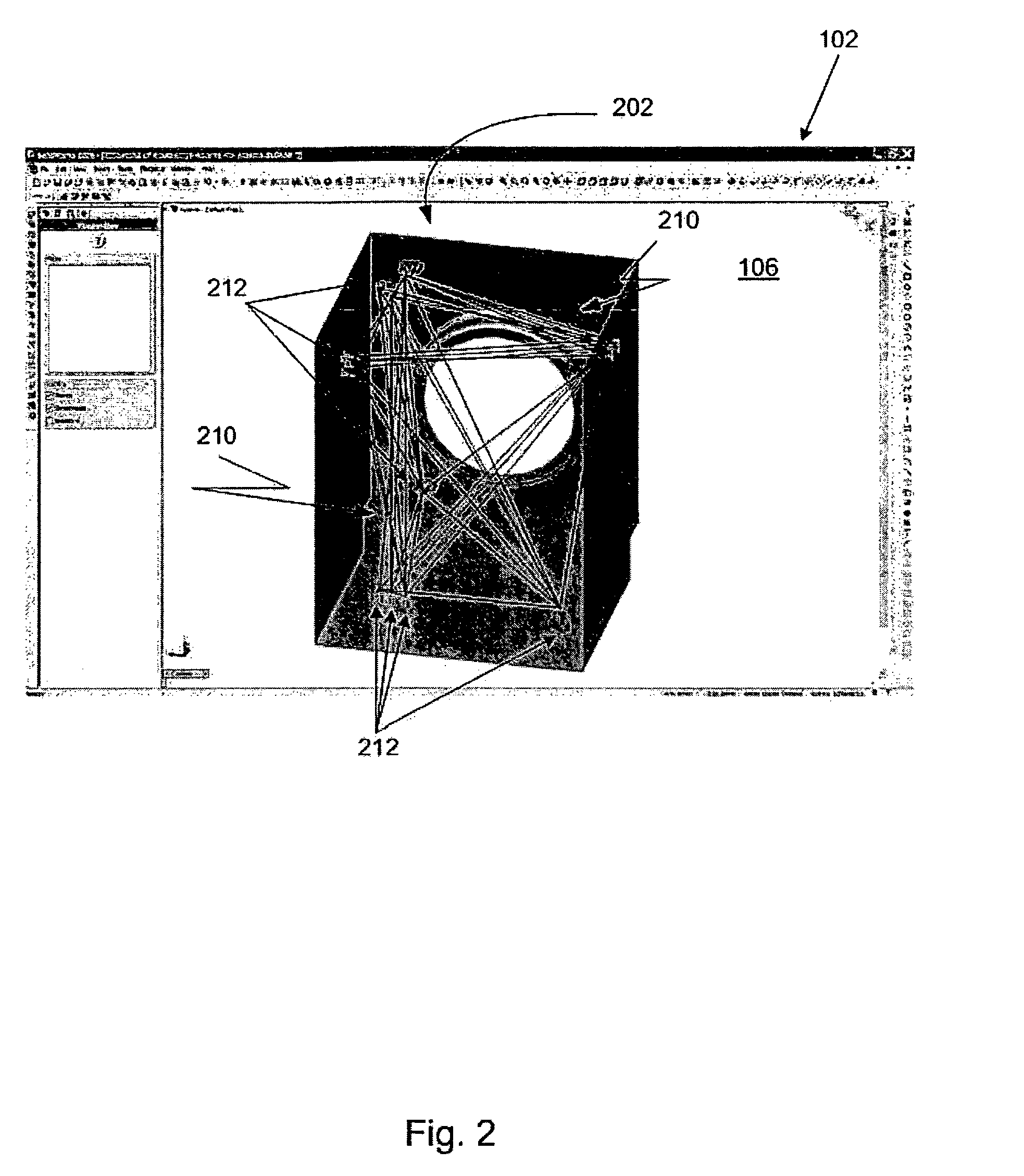Connectivity controlled wire routing
a wire routing and wire technology, applied in the direction of insulated conductors, cables, instruments, etc., can solve the problems of complex wiring system, cumbersome and time-consuming tasks, and expense associated with creating mock-ups, so as to simplify the routing system and reduce the number of geometric entities
- Summary
- Abstract
- Description
- Claims
- Application Information
AI Technical Summary
Benefits of technology
Problems solved by technology
Method used
Image
Examples
Embodiment Construction
[0029]The present invention provides advanced modeling capabilities for the design of routing systems. Such modeling capabilities include the visualization and creation of necessary routes. The present invention facilitates the design of complex routing systems by electrical design engineers who may be inexperienced in 3D CAD modeling, reduces the number of errors in a routing system by deriving all data from a from-to list of connections, and aids in the discovery of the most efficient routing thereby reducing costs and design time, and minimizing the amount of re-work necessary and the amount of wire stress.
[0030]The present invention assists in creating a virtual mockup and enables engineers to easily and quickly visualize wiring and cabling systems. Using the present invention, a design engineer can create harness bundles and route elements of the harness through a 3D model. Moreover, the present invention can automatically convert individual wires or cables into a route, join a...
PUM
 Login to View More
Login to View More Abstract
Description
Claims
Application Information
 Login to View More
Login to View More - R&D
- Intellectual Property
- Life Sciences
- Materials
- Tech Scout
- Unparalleled Data Quality
- Higher Quality Content
- 60% Fewer Hallucinations
Browse by: Latest US Patents, China's latest patents, Technical Efficacy Thesaurus, Application Domain, Technology Topic, Popular Technical Reports.
© 2025 PatSnap. All rights reserved.Legal|Privacy policy|Modern Slavery Act Transparency Statement|Sitemap|About US| Contact US: help@patsnap.com



